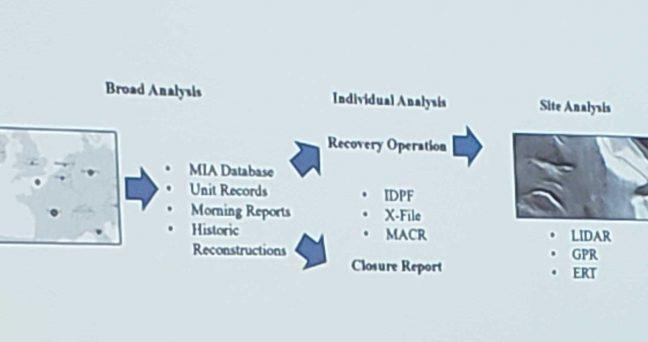Wednesday, operations manager for the UW-Madison Missing in Action project Chris Zaczyk delivered a presentation about missing Wisconsin airmen from World War II. The purpose of the MIA project is to honor the sacrifice of unrecovered veterans.
Zaczyk spoke about two missing airmen in particular: one named Walter Stone and another named Frank Fazekas. The MIA project, which works out of the biotechnology center on campus, recovered both of their remains after they died in plane crashes.
Zaczyk talked about the ways in which technology affects how the MIA project tracks down and remembers those missing in action. Zaczyk said the MIA project uses a variety of techniques and technologies, as well as historical records. They use a database containing information of those missing in action across the country, then narrow their search to Wisconsinite MIAs.
Once they’ve chosen an MIA to focus on, they use information from the MIA’s unit — like crew reports, unit reports, geographic data and battle reconstructions to try and figure out where they might have gone.
“We can also use analytics available right here at the university that scan the relevant documentation,” Zaczyk said.
Once they pinpoint the site, the project team goes on an archeological dig to try and recover the body. At this stage, factors like soil density and depth can make the expedition difficult. In the case of Fazekas, they had to dig down five meters to find the remains.
In response to a question from the audience, principal investigator of the project John Hall said the archeological aspect of the recovery can be difficult.
“The logistics of that kind of expedition are quite daunting,” Hall said.
Aside from Stone and Fazekas, the project also recovered the body of Private First Class Lawrence Gordon, an infantry member.
Counting Gordon, along with the other two recoveries, the project has experienced a “100% success rate” for their recovery initiatives. Zaczyk said they’ve been “very fortunate” to work with several scientists and the University of Wisconsin biotechnology center for interdisciplinary solutions.
“We’re very proud of the successes that we had, but we’re very hungry for more,” Zaczyk said. “Our goal is that every family in Wisconsin knows what happened to their loved one.”


